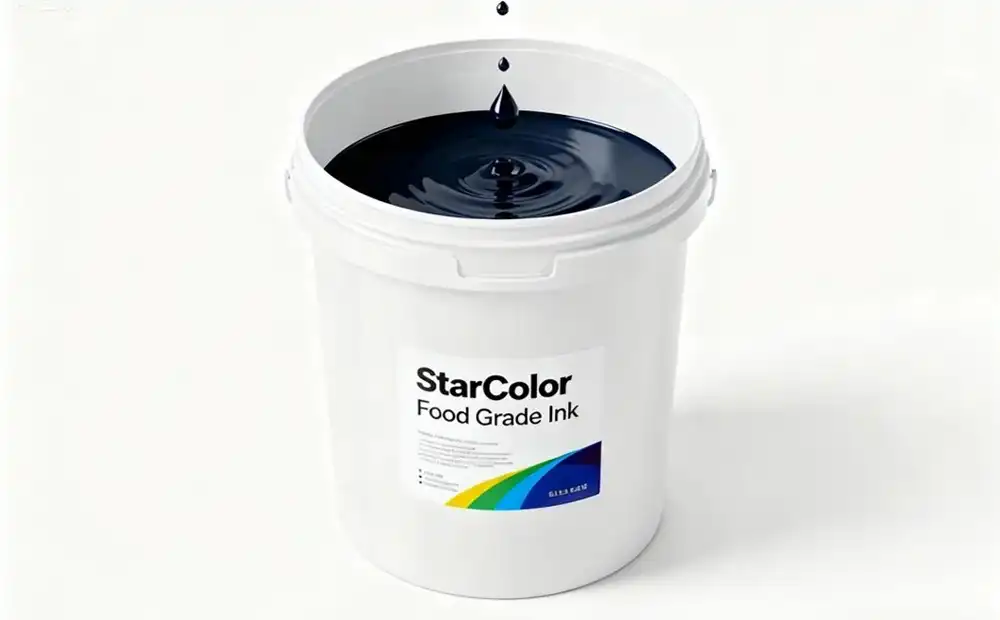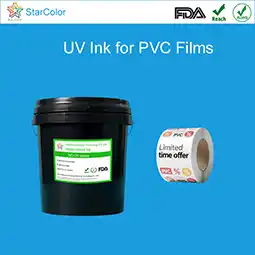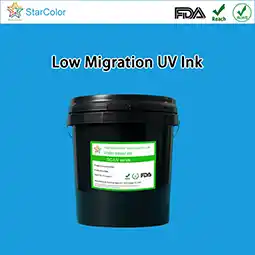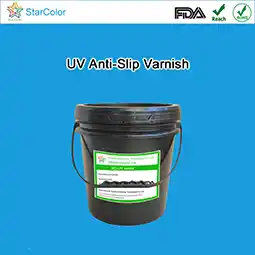Environmental requirements and challenges of food-grade water-based inks
Date: Nov 21 2023 From: Star Color Views:
As a key consumable in direct or indirect contact with food, the quality of food-grade water-based ink depends not only on its formulation and manufacturing process but also on environmental control throughout production, storage, and printing. Unlike conventional water-based inks, food-grade products must strictly avoid risks such as microbial contamination, component migration, and batch variability.
This article systematically analyzes the core environmental requirements in the production and application stages of food-grade water-based inks, examines common challenges, and provides actionable strategies to help enterprises ensure product safety and regulatory compliance.
1. Production Stage
The production environment of food-grade water-based ink directly determines its purity and safety. It must meet three core standards: low contamination, high stability, and zero cross-contamination. Even minor environmental deviations can result in non-compliant products.
1.1 Core Environmental Requirements
- Precise temperature and humidity control: The production area should maintain a temperature of 23±2°C and relative humidity of 50±5%. Excessive heat accelerates resin aging and additive evaporation, causing abnormal ink viscosity; high humidity promotes microbial growth, especially in organic film-forming agents, leading to odor and spoilage. Low humidity may cause rapid water evaporation, pigment flocculation, and separation.
- Cleanroom compliance: The production area should meet ISO Class 8 (100,000-grade) cleanliness, with airborne particle counts ≤3.5×10⁵ per m³. Dust and fibers must be minimized to prevent contamination. Independent air filtration systems (≥F8 filter grade) are required to prevent external pollutants from entering the workspace.
- Cross-contamination prevention: The food-grade production area must be completely isolated from solvent-based or conventional ink areas. Equipment should be cleaned with food-grade detergents and rinsed three times with deionized water to remove residues, ensuring no cross-contamination between different batches or ink types.
1.2 Challenges and Solutions
- Challenge 1: Temperature and humidity fluctuations causing batch inconsistency.
Small-scale facilities relying on natural ventilation often experience daily fluctuations of ±5°C, leading to viscosity deviations up to 15% and color inconsistency during printing.
Solution: Install constant temperature and humidity control systems, monitor key processing points in real time, and automatically adjust conditions to ensure environmental stability. - Challenge 2: Microbial contamination due to insufficient cleanliness.
A case study reported microbial colony counts of 50 CFU/g due to inadequate floor sanitation, resulting in total batch rejection.
Solution: Implement a “daily cleaning + weekly disinfection” routine using 50 ppm sodium hypochlorite solution. Require operators to wear sterile suits and gloves, passing through air showers before entering the workshop to remove dust and contaminants.

2. Application Stage
Environmental control during printing is equally critical, as improper conditions can cause printing defects or introduce secondary contamination. The environment must align with substrate characteristics and printing processes.
2.1 Core Environmental Requirements
- Temperature and humidity matching substrate type: For non-absorbent substrates such as BOPP and PE, maintain temperature at 22–25°C and humidity at 45–50% to prevent static-induced dust attraction. For absorbent substrates like paper and non-woven fabrics, humidity should increase to 50–55% to prevent excessive drying and ink penetration. Dust concentration should remain ≤10 mg/m³ to avoid print defects such as pinholes or blank spots.
- Drying process control: Hot air or infrared drying should be precisely controlled to avoid substrate deformation or incomplete ink drying. After drying, the ink film should be cooled to room temperature to prevent sticking and bacterial growth during rewinding.
- Cleanliness to prevent cross-contamination: Printing equipment for food-grade inks must not be shared with conventional inks. Before each new batch, clean the equipment thoroughly using deionized water and food-grade detergents, then verify cleanliness before production. Finished prints should be stored on clean pallets, avoiding direct contact with floors or walls.
2.2 Challenges and Solutions
- Challenge 1: High humidity slows drying and causes smudging.
In humid climates, such as southern regions with humidity above 65%, drying time can extend from 2 to 5 seconds, causing smudging and over 10% waste.
Solution: Use industrial dehumidifiers to maintain humidity below 55%; optimize drying using infrared preheating plus hot air; add 3–5% quick-drying additives to accelerate moisture evaporation. - Challenge 2: Inadequate cleaning leads to cross-contamination.
Residual conventional ink can cause solvent contamination in food-grade production.
Solution: Maintain detailed cleaning logs recording cleaning time, detergents used, and inspection results. Swab key parts for solvent residue testing before production resumes.
Conclusion
The environmental requirements for food-grade water-based inks fundamentally revolve around full-process safety control — preventing contamination during production, ensuring stability during storage, and avoiding risks during application. Any environmental lapse in these stages can result in non-compliance with food-contact safety standards.
As global food packaging regulations become increasingly stringent, environmental management will become a core competitiveness factor for ink manufacturers. Only by maintaining rigorous environmental control can companies ensure food safety, build trust, and gain a lasting advantage in the market.
 RU
RU EN
EN CN
CN















